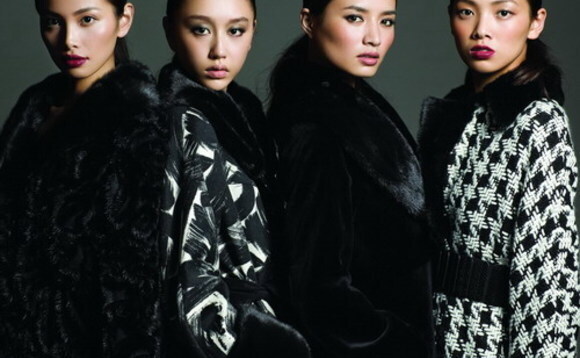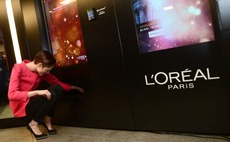
Private equity's fashion fix

Fashionable women the world over aspire to own something – a handbag, a coat, a pair of leather pumps – by a designer of such legacy and prestige as Valentino. But in May 2007, global private equity investor Permira pulled the ultimate one-upmanship: it bought Valentino.
More precisely, the private equity firm bought Valentino Fashion Group, which includes labels Valentino, M Missoni and MCS Marlboro Classics - as well as a 51% stake in Hugo Boss - for the lofty price of $1.06 billion. Permira was said to have beaten The Carlyle Group to the controlling 29.6% stake sold by the Marzotto family, which purchased the company in 2002 and listed it in 2005.
Ahead of the sale, banks downgraded Hugo Boss' rating out of fear that Permira would low-ball its offer, but these same institutions spoke positively of the transaction after its completion. It ranked highly among a string of luxury fashion purchases by private equity over a two-year period in the mid-2000s. Others included Apax Partners' 2006 acquisition of Tommy Hilfiger, Prada's sale of Jil Sander to Change Capital Partners the same year, and TowerBrook Capital's 2007 purchase of Jimmy Choo.
The global financial crisis brought about a seismic shift in the geographical emphasis on these brands' business. Suddenly Asia wasn't just home to a fast-growing consumer market but also a cache of brands and investors that aspire to elevate their status to the ranks of luxury.
During the first half of 2010, several private equity-backed fashion brands sought refinancing deals or abandoned listing plans due to volatile public markets and poor investor sentiment. Just two fashion companies, Fly53 and Frontline GmbH, received private equity investment during this period, compared to five in Asia. Four of those deals were made in China, and one was completed in India.
China and India have emerged as especially compelling markets for fashion in parallel with rising disposable incomes. Private equity has already brokered several deals in these countries in 2011, hoping that strong exit options will draw big returns as more Western brands hope to capitalize on the growing pool of consumers.
"There are always firsts that you can find in these markets. The larger fashion houses are all already here, but there are certainly brand opportunities available," says Angelito Tan, co-founder and managing partner of Shanghai-based luxury brand consultancy Proximity Live.
A love of luxury
At the heart of Asia's fashion and apparel growth is consumers' love of luxury. According to a recent report by McKinsey & Company, sales of luxury goods in China rose 16% to RMB64 billion ($10 billion) in 2009, down by only four percentage points on 2008, despite the country experiencing an economic downturn. McKinsey expects sales to reach $27 billion by 2015, accounting for 20% of the luxury market worldwide.
The report notes that Louis Vuitton has 36 stores in 29 cities across mainland China. It had just 10 cities in 2005. Gucci, meanwhile, has 39 outlets nationwide, up from six in 2006, while Hermes has quadrupled its number of stores from five in 2005 to 20 today.
Tiffany last week credited Chinese buyers as the key driver for its 33% rise of global net earnings to $90 million. The clout that Greater China shoppers hold also swayed Prada's decision to list on the Hong Kong stock exchange in June rather than in Europe.
India lags China's in terms of luxury spending but it is still viewed as a key target market. Sales amounted to $846 million last year - only 0.5% of the global total - but consultancy Bain & Co. tips the market to post compound annual growth of 5-10% over the next few years.
For the globe's most recognized luxury brands, the "first mover takes all" phase is well past, and the opportunities now are about fortifying brand presence.
"If you go back five years, there were only four or five really big fashion designers in India, but today it's a spectrum," says Sushant Panda, director of advertising agency Euro RSCG in New Delhi. "What this is doing is fueling domestic consciousness of brands, and encouraging a whole host of not-so-well-known brands to step it up."
Panda tips China and India's homegrown luxury segment - characterized by a clutch of aspirational or "accessible luxury" brands - to see incredibly strong growth. Names like NE Tiger, Chow Tai Fook and Dorian Ho in China, and Satya Paul and Krishna Mehta in India have caught the eye of consumers for grasp of local styles and culture. Investors are tracking these brands, most of which require capital for expansion.
"Customers aren't just interested in the largest fashion houses anymore - they want names with a less-than 10-year history," Tan adds. "Consumers are looking for more choices, and are looking for brands that really speak to them. That creates opportunities."
The broad scope of aspirational brands has led private equity investors beyond what would normally be termed luxury in the West. Japan presents itself as a model of how these trends evolve. The country accounts for 11% of global luxury sales yet casual retailer Uniqlo is one of the highest-grossing clothing companies.
In China, a less mature market, consumers love their Jimmy Choos, but there is also a strong mass market following for Belle International Holdings, which claims approximately 50% market share in the women's $90-150 footwear space. This is perhaps a reflection of the fact that, while incomes are rising, there is still a marked disparity in spending power - a Shanghai consumer's perception of an aspirational brand is likely to differ from that of a shopper in Luoyang.
"Our whole mandate is to not invest in luxury, but to invest in brands that have the bandwidth to grow," Hanji Huang, Greater China managing director of LVMH's investment arm L Capita, tells AVCJ. "We look for the ‘three As' - alternative, affordable and aspirational. We look for companies that have the vision to be an industry leader, and not necessarily to in luxury."
A place for PE
In 2011 to date, private equity firms have purchased stakes in nine fashion and accessory companies in Asia - five in China, three in India and one in Singapore. Among the most talked about deals was L Capital's investment in New Delhi-based retail chain Genesis Luxury Fashion. L Capital took a 25.5% stake in the asset and is considering upping the stake by 14.5% in the coming years.
L Capital also completed a PIPE investment in Hong Kong-based Ming Fung Jewellery Group and a growth commitment in Singapore-based Charles & Keith in 2011, making its newly launched $650 million L Capital Asia the most active fund in the region. The vehicle, which focuses on the wider lifestyle and services sector, was capped at $650 million despite considerable interest from LPs.
Huang says fashion in China and India appeal to investors because of the markets' ample retail consumer base and the scalability of brands. "The market is still quite good for funds that have invested in this sector because it offers good return to entrepreneurs and there's no strong signal for consolidation. Company owners want to take their brands to the next level, and we're clearly at a growth stage in Asia," he says.
Sources say the most available brands to private equity in China and India tend to be cash-rich and debt-free, which is refreshing given the state of many brands in Western markets. Valuations are still reasonable, too, due to the size of companies available to investors, though prices tend to be higher in China than India.
The largest investment in Asia's apparel space in recent years was Government of Singapore Investment Corp's (GIC) purchase of a 25% stake purchase in textile products firm Reid & Taylor for $212 million in June 2008. Other sizeable buyouts - executed by the likes of HSBC Private Equity, H&Q Asia Pacific and Navis Capital Partners - have also targeted Singapore-based assets. Most of these transactions were worth $70-90 million. In China and India, minority stake purchases generally range from $3-$30 million, according to AVCJ Research.
The key to growth is offering something more than just capital. For example, a brand might have outlets nationwide but lack the know-how to improve its products. Private equity can use its own network to source expertise and better materials and implement quality production methods. Investors have also been known to tutor their portfolio companies in marketing, public relations, in-store design and front-of-house sales strategy. Government relationships, M&A experience and management and branding expertise - or even the ability to sign on a celebrity endorser - can also be crucial value-add assets.
Providing value-add for aspirational brands is far easier than creating it for established names, though private equity can still play a role.
Melvin Glapion, managing director at Kroll in London, points to Permira and its management of the Valentino Fashion Group. One of the key additions the firm made was the purchase of a 45% stake in designer label Proenza Schouler, admired for its fresh, up-and-coming styles. It was seen as a diversification play for the Valentino Group, and Permira's commitment gave Proenza Schouler capital to further develop its brand.
In July, Permira exited its stake in Proenza Schouler, but Valentino Group retained an interest in the company.
"Private equity has the opportunity to expand a brand into other areas that can reinforce a company," Glapion says. "If a brand has clothing, look into handbags and expand into jeans and jewelry. That diversification will create heat for the brand, and the products give a brand a chance to create more stores."
A fashionable exit
According to Huang, if a private equity firm has done its job implementing positive changes to grow a fashion and lifestyle brand in Asia, it could be looking at an IPO exit valued at 25x its portfolio company's forward price-to-earnings ratio. "In an IPO, 25x P/E is good for companies that are leaders in their field. Some will fall to 15x P/E after launch, but these won't be the leaders in their field," he says.
IPOs have accounted for four private equity exits in Asia since October 2009, while trade and secondary sales account for three, according to AVCJ Research. The largest of the listings was Fila Korea, which was ushered onto the market in September 2010 by Fine Partners, Military Mutual Aid Association and Mirae Asset MAPS Global Investments. That debut was the second-best made on South Korea's Kospi Index that year.
There has only been one true secondary buyout: Bain Capital's purchase of Lilliput Kidswear from Indivision Investment Advisors for $86 million in April 2010.
Similarly, there has only been one transaction that can be classified as a genuine trade sale: MKS Partners exit of Japanese apparel designer Fukusuke Corporation to Toyota Tsusho Corp. for an undisclosed sum in October 2009. The fact this happened in Japan speaks volumes for the maturity of the market relative to emerging Asia. Put simply, the rush to snap up homegrown labels in the likes of China and India has yet to begin.
"I know it's something a few of the larger groups are talking about, the interest is there," Tan says. "However, it's extremely important that any acquisition target fit well with the core values of the Western fashion house, but a lot of those values aren't aligned at present."
He tips other Asian buyers, such as those from Japan or South Korea, as the most likely first movers in this space.
Some Western labels still hope their own brand will be able to find a niche in Asia's growing consumer market. Those that opt out of organic expansion - which presents its fair share of financial and operational challenges - might surprise the industry if and when they do begin to engage in M&A. Once again, the key theme is the breadth of their investments they are willing to consider.
"One of the things you will see is interest from Western companies that are looking for some brands in Asia with a good model that could compete well with the H&Ms and the Zaras of the world," Glapion says. "It doesn't have to do with luxury."
Latest News
Asian GPs slow implementation of ESG policies - survey
Asia-based private equity firms are assigning more dedicated resources to environment, social, and governance (ESG) programmes, but policy changes have slowed in the past 12 months, in part due to concerns raised internally and by LPs, according to a...
Singapore fintech start-up LXA gets $10m seed round
New Enterprise Associates (NEA) has led a USD 10m seed round for Singapore’s LXA, a financial technology start-up launched by a former Asia senior executive at The Blackstone Group.
India's InCred announces $60m round, claims unicorn status
Indian non-bank lender InCred Financial Services said it has received INR 5bn (USD 60m) at a valuation of at least USD 1bn from unnamed investors including “a global private equity fund.”
Insight leads $50m round for Australia's Roller
Insight Partners has led a USD 50m round for Australia’s Roller, a venue management software provider specializing in family fun parks.







